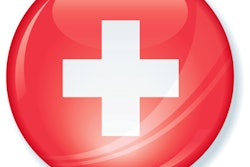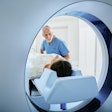
When a medicine-related question was put to radiologist Dr. Jan Bosmans during a TV quiz show in 2006, the show's host suggested Bosmans should be able to answer it because he was "a kind of doctor."
"If an educated man like the quizmaster wasn't sure I was a doctor, what hope was there that outpatients would be either?" said Bosmans, staff radiologist and coordinator of the ultrasound division in the department of radiology and medical imaging at Ghent University Hospital in Belgium. "This confusion has haunted me ever since."
Just a picture taker?
Although Bosmans' particular status as an ultrasound specialist is clear to his patients, he believes that this is not generally the case for diagnostic radiologists.
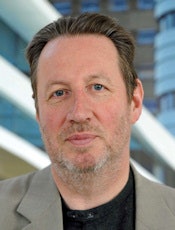 There needs to be more awareness that the radiologist is the patient's doctor just like any other, according to Dr. Jan Bosmans of Ghent University Hospital in Belgium.
There needs to be more awareness that the radiologist is the patient's doctor just like any other, according to Dr. Jan Bosmans of Ghent University Hospital in Belgium.
"I think many people believe that the referring clinician is the doctor and the radiologist is just a picture taker. There needs to be more awareness that the radiologist is the patient's doctor just like any other. If not, the idea that we should find ways to report directly to the client is pointless," Bosmans said.
To understand how wide the misconception of radiologists is, Bosmans is conducting a survey on the conceptions and perceptions of diagnostic radiology that includes eight centers: four hospitals and four private practices. To date, there have been only a few studies on this topic, including the 2009 U.K. study by Dr. Lee Grant and colleagues that was conducted across 973 patients in a hospital-only setting (European Radiology, October 2009, Vol. 19:10, pp. 2326-2332).
"We believe there is a chance that the perception of our role will be different between hospitals and private practice," Bosmans said.
The assumption is based on the fact that patients meet the private-practice radiologist in person. There is also a trend toward private-practice patients asking for further explanations, which doesn't happen in hospitals, where most of the time patients meet the technicians and nurses, according to Bosmans.
The current study took six months to prepare and started in March. It will run until the end of April, and upon completion, it will have involved more than 1,000 patients who will be asked how much they agree with a series of statements, including the following:
- "The radiologist is a technician, something like a photographer."
- "A radiologist has the right to prescribe medicine."
- "The radiologist can't take tissue samples."
Patients will be asked to answer in a Likert scale that ranges from "completely agree" to "completely disagree," and that includes categories in between such as "rather agree," "rather disagree," and "don't know."
Preliminary results so far show that even patients who know that a radiologist is a doctor are still confused about whether they can prescribe medicine or take tissue, according to Bosmans. Initial results will be presented at the Management in Radiology (MIR) meeting in Bologna, Italy, held 2-3 October.
"I am sure that the results will prove the existence of this misconception of radiology and that disseminating them will help to raise awareness among referring clinicians, patients, the wider population, and the authorities," Bosmans said. "This needs a major awareness initiative on the part of the national societies of radiology."
Invisible on television
Television reflects radiology's invisibility, according to Bosmans, pointing to reality programs such as the Flemish series "Top Doctors," which followed important specialties in each episode but neglected radiologists and general physicians. Furthermore, in fictional hospital dramas such as the U.K. series "Holby City," the emergency department doctor or the heart surgeon, not the radiologist, is seen to interpret scans on a regular basis.
"We are forgotten by the media and the general public as a consequence. How can we play a major role in healthcare if that role is obscured? It's high time that we come out of the dark and step into the light," he said.
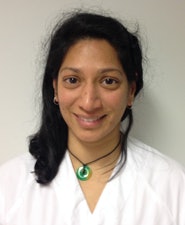 Public opinion of radiology counts in the battle for turf and funding across hospitals, according to Dr. Anagha Parkar, consultant radiologist at Haraldsplass Deaconess Hospital in Bergen, Norway.
Public opinion of radiology counts in the battle for turf and funding across hospitals, according to Dr. Anagha Parkar, consultant radiologist at Haraldsplass Deaconess Hospital in Bergen, Norway.
Other radiologists would agree and cite the wider financial implications as a reason why radiologists should strive for visibility in hospitals.
"This is not about our identity as doctors but about the survival of the specialty," said Dr. Anagha Parkar, consultant radiologist at the Haraldsplass Deaconess hospital in Bergen, Norway.
"Public opinion of the specialty matters. Patients only back the groups they know. Politicians don't fund the services that patients don't ask for. When you are fighting turf battles and for department funding it is important to have the support of the clinician and patient -- or you will be weaker in the system," Parkar said.
She points to a danger that radiologists may already be at a disadvantage, particularly given the growing use of imaging by other doctor groups who enjoy generous representation in the media and direct contact with grateful patients.
An exception to the rule is interventional radiology. While interventional radiologists may not feature as the profession of lead characters in prime-time TV, they are in daily routine contact with patients.
Dr. Luc Defreyne, head of the department of interventional radiology and neuroradiology at Ghent University Hospital, said his patients have a clear understanding of his work because there is contact before and after treatment.
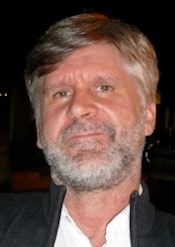 The best way for radiologists to become more visible is to participate in and promote interventional radiology, according to Dr. Luc Defreyne, an interventional radiologist at Ghent University Hospital.
The best way for radiologists to become more visible is to participate in and promote interventional radiology, according to Dr. Luc Defreyne, an interventional radiologist at Ghent University Hospital.
"The radiologist is in an ambiguous situation, as he sees the patient's images but not the patient himself. One of the best ways for diagnostic radiologists to make themselves more visible is by participating in and promoting interventional radiology," Defreyne said.
Other interventional radiologists claim that patients may not realize the extent of the interventional radiologist's remit.
"As an interventional radiologist, I am never seen as an 'imager' by patients. They see me as the doctor treating them," said Dr. Andy Adam, clinical director for imaging and medical physics at Guy's and Thomas' Hospital and professor of interventional radiology at King's College London. "Some of them may not realize that I also formally interpret radiological images."
Adam specializes in interventional oncology, particularly tumor ablations in patients with cancers in the kidney, lung, or liver.
"The key to diagnostic radiologists' becoming more visible is for them to talk to patients and referrers, and to act as fully fledged clinicians who have a place in the patient pathway. A radiologist who communicates only via reports will find it difficult to attain visibility," he noted.
First impressions
How radiologists introduce themselves may be a small part of the answer. The Dutch word "Röntgenarts," literally meaning "x-ray doctor" in English, is little used in Belgium. Instead Bosmans introduces himself as Dr. Jan Bosmans and informs his patients that he will be performing ultrasound on them.
The Norwegian equivalent "Roentgenlege" is also nearly extinct in Norway, but Parkar deliberately chooses to use it when meeting patients.
"It's an old fashioned and incorrect term, but then they know I am a doctor and I will be asked questions. It helps to establish the patient-doctor relationship immediately. Even so, I am sometimes mistaken for a radiographer," Parkar said.
The differences in perception may, in some cases, be directly linked to language, she noted. In Germany, for example, radiographers are often called "technicians," so the difference between radiographer and radiologist may be clearer to patients.
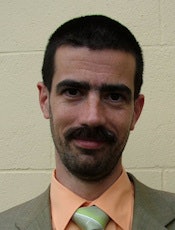 Dr. Endre Szabó, University of Szeged, Hungary.
Dr. Endre Szabó, University of Szeged, Hungary.
In Hungary, doctors usually carry out ultrasound scans, mammography exams, and interventional procedures, while radiographers perform x-rays, CT, and MRI scans, according to Dr. Endre Szabó, assistant professor in the department of radiology at University of Szeged in Hungary. The patient will deduce from the type of examination who is conducting it, Szabó explained, underlining the fact that he never introduces himself as a doctor and can't recall any occasions when he was mistakenly identified by a patient as another member of staff.
He has, however, at times subtly defended the value of his consultancy against referring clinicians who would otherwise limit his role to providing a technical service.
"I have seen lead surgeons pointing to the aortic knob on a chest x-ray showing the tumor to be removed before I slightly move his finger to the right spot without saying too much," he noted.
Introductions alone are only the tip of the iceberg, according to Parkar. The problem is, like the mass of ice beneath the water, radiologists and their work are for the most part unseen; they don't meet patients and are not used to dealing with them.
"All specialties have become more patient-focused -- we have to change too," Parkar said, citing subspecialty training as key to maintaining a strong identity as a consultant in the eyes of clinicians and patients.
A proposed legal change in Norway means that patients will in future be able to look at their own reports and images and ask for explanations.
"We think there will be a growing trend of questioning and second opinions for MRI and x-ray among the younger generation of patients. We need to make ourselves known to this group for support," Parkar said. "Our future will depend on what we do now. We have to learn to connect with patients. If radiologists say they don't have time and send patients to clinicians, why would any patient group support them?"







